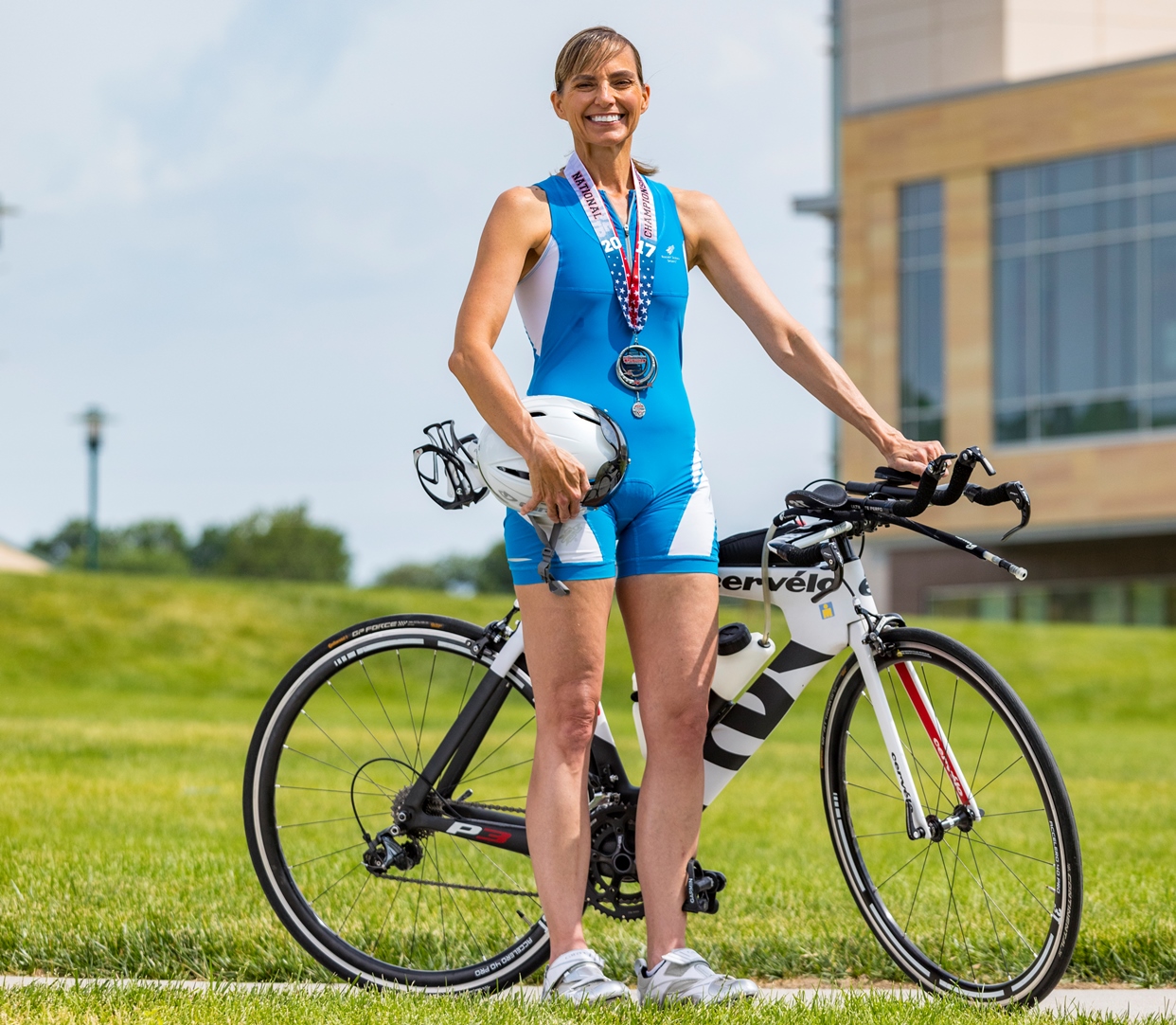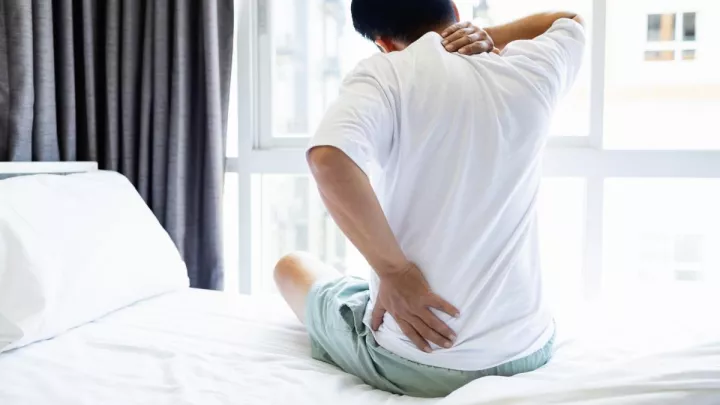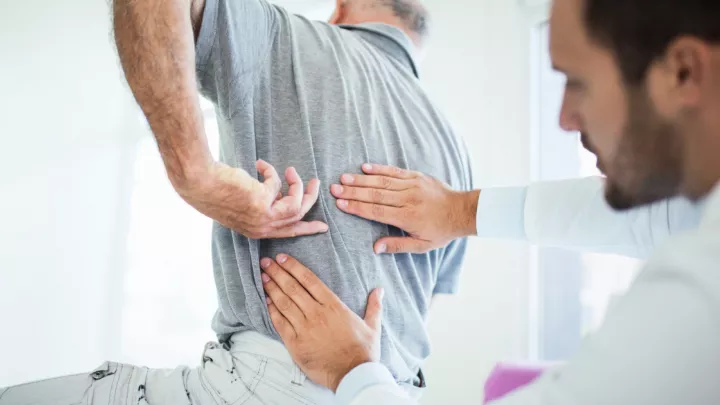Triathlete aims to win national triathlete competition after successful spine surgery

Not many people take up competing in Ironman competitions in their late 40s, much less after having spine surgery.
But Renee Spencer did both. And it won her a first-place spot in her age group for the USA Triathlon Age Group National Championship. Two months later, she finished one person away from qualifying for the world team.
“The only regret I have is that I didn’t have the surgery sooner,” says Spencer. “It was instant relief from my pain.”
Spencer was 46 years old when she decided to start training and competing in Ironman competitions. “I did my first triathlon and did pretty well and thought, ‘Wow, I can do this.’ Before I knew it, I was training for Ironmans.”
An Ironman triathlon consists of a 2.4 mile swim, a 112 mile bike ride and 26.2 mile run.
Specialists at the Comprehensive Spine Program can get you in quickly for an evaluation and treatment and ensure you are seen by the appropriate specialist. For an appointment, call 800.922.0000 or learn more at NebraskaMed.com/Spine.
But then the pain started. It began in her legs and it wouldn’t subside, even with rest or physical therapy. After seeing several orthopaedic specialists, Spencer selected orthopaedic surgeon Chris Cornett, MD, with the Comprehensive Spine Program at Nebraska Medicine.
_0.jpg)
An MRI revealed that one of her discs was worn to the bone. Dr. Cornett recommended conservative measures first, which included steroid injections and more rest to help alleviate the pain. But it never went away completely and as Spencer began to rev up her workouts, so did the pain.
It was time. Spencer had to make a choice. If she wanted to continue to compete at the same level, she would need surgery. In December 2016, Spencer underwent a spinal fusion surgery.
Dr. Cornett accessed the spine by entering near Spencer’s abdomen to avoid going through the back muscle. He then removed the damaged disc and thickened tissues between the two vertebrae. A bone graft and cage was then used to fill the space between the two vertebrae. A metal plate and screws were used to hold the vertebrae in place while the bone grew together.
“Renee’s procedure was so successful because a lot of thought and planning went into this before she had the surgery,” says Dr. Cornett. “Successful back and spine surgery is based on selecting the right procedure for the right person. Not everyone is a candidate for surgery and different procedures are right for different people. I also follow my patients for two years after their surgery in case we need to tweak things along the way.”
“I chose Dr. Cornett for the surgery because he spent so much time with me explaining the procedure and showed concern for my physical and mental health,” Spencer says. “He assured me that this was the right procedure for me and that there was no reason why it couldn’t be 100 percent successful so I could return to my training and competing again.”
The specialists at the Comprehensive Spine Program are trained to treat spine issues from the common to the complex. This team of specialists includes physical medicine and rehabilitation (PM&R) specialists, orthopaedic surgeons, neurosurgeons, pain specialists and physical and occupational therapists who work together to ensure patients receive the best and most appropriate care quickly and conveniently. A call to the Comprehensive Spine Program will connect patients to an experienced nurse who will listen to their symptoms and help them schedule an appointment with the most appropriate specialist.
Spencer says she was walking the hallways of the hospital the same day as her surgery and was home the next day. “I took one pain reliever the day I came home and never had to take another one again,” she says.
Spencer began increasing her walking distance every day. By six weeks, she was aqua jogging, at eight weeks she was swimming, and by 10 weeks she was bicycling. By 12 weeks, she had returned to two to four hours daily of competition training
Six months later, she was competing again and winning races. Today, Spencer is training for the USA Triathlon Age Group National Championship in August and has her goal set on winning. “I feel great and I have no pain now, thanks to Dr. Cornett,” says Spencer.







